Function and Classification of Bones
Classification of Bones
The 206 named bones of the human skeleton are divided into two groups: axial and appendicular.
The axial skeleton forms the long axis of the body and includes the bones of the skull, vertebral column, and rib cage. Generally speaking these bones protect, support, or carry other body parts.
The appendicular skeleton consists of the bones of the upper and lower limbs and the girdles (shoulder bones and hip bones) that attach the limbs to the axial skeleton. Bones of the limbs help us move from place to place (locomotion) and manipulate our environment.
Bones come in many sizes and shapes. For example, the pisiform bone of the wrist is the size and shape of a pea, whereas the femur (thigh bone) is nearly two feet long in some people and has a large, ball-shaped head. The unique shape of each bone fulfills a particular need. The femur, for example, withstands great pressure, and its hollow-cylinder design provides maximum strength with minimum weight to accommodate upright posture.
Generally, bones are classified by their shape as long, short, flat, or irregular
- Long bones, as their name suggests, are considerably longer than they are wide. A long bone has a shaft plus two ends which are often expanded. All limb bones except the patella (kneecap) and the wrist and ankle bones are long bones. Notice that these bones are named for their elongated shape, not their overall size. The three bones in each of your fingers are long bones, even though they are small.
- Short bones are roughly cube shaped. The bones of the wrist and ankle are examples. Sesamoid bones are a special type of short bone that form in a tendon (for example, the patella). They vary in size and number in different individuals. Some sesamoid bones act to alter the direction of pull of a tendon. The function of others is not known.
- Flat bones are thin, flattened, and usually a bit curved. The sternum (breastbone), scapulae (shoulder blades), ribs, and most skull bones are flat bones.
- Irregular bones have complicated shapes that fit none of the preceding classes. Examples include the vertebrae and the hip bones.
The vertebrae is just another word for your spinal column. In the majority of people, you will see a spine that is straight, which is the most common shape. However, in some circumstances the vertebrae could be curved, forming a C or S shape. This is called Scoliosis. This condition can affect people of any age but can be most commonly found in teenagers who are going through puberty. Sometimes, scoliosis can be treated by wearing a back brace, but in some cases, surgery at places similar to the Scoliosis Institute, (https://scoliosisinstitute.com/) could be the only choice in helping you to have a straight and normal-shaped spine.
Functions of bones
Our bones perform seven important functions:
- Support. Bones provide a framework that supports the body and cradles its soft organs. For example, bones of the lower limbs act as pillars to support the trunk body when we stand, and the rib cage supports the thoracic wall.
- Protection. The fused bones of the skull protect the brain. The vertebrae surround the spinal cord, and the rib cage helps protect the vital organs of the thorax.
- Movement. Skeletal muscles, which attach to bones by tendons, use bones as levers to move the body and its parts. As a result, we can walk, grasp objects, and breath. The design of joints determines the types of movements possible.
- Mineral and growth factor storage. Bone is a reservoir for minerals, most importantly calcium and phosphate. The stored minerals are released into the bloodstream in their ionic form as needed for distribution to all parts of the body. Indeed, deposits and withdrawals of minerals to and from the bones go on almost continuously. Additionally, mineralized bone matrix stores important growth factors.
- Blood cell formation. Most blood cell formation, or hematopoiesis, occurs in the red marrow cavities of certain bones.
- Triglyceride (fat) storage. Fat, a source of energy for the body, is stored in bone cavities.
- Hormone production. Bones produce osteocalcin, a hormone which not only helps regulate bone formation, but also protects against obesity, glucose intolerance, and diabetes mellitus.
Review
- Name the major regions of the skeleton and describe their relative functions.
- Compare and contrast the four bone classes and provide examples of each class.
- List and describe seven important functions of bones.
Check your understanding
- What are the components of the axial skeleton?
- Contrast the general function of the axial skeleton to that of the appendicular skeleton.
- What bone class do the ribs and skull bones fall into?
- What is the functional relationship between skeletal muscles and bones?
- What two types of substances are stored in bone matrix?
- Describe two functions of a bones marrow cavities.
Related Posts
Category: Skeletal

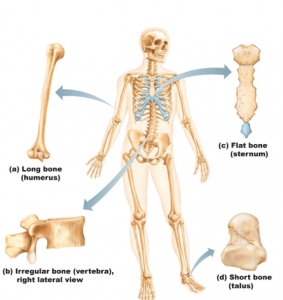



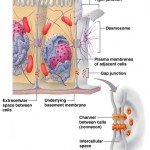
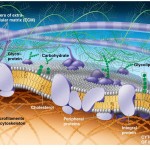
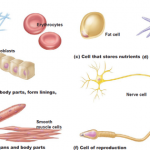

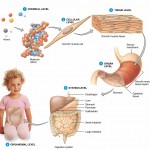

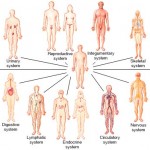

Keep up